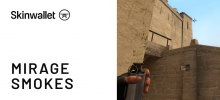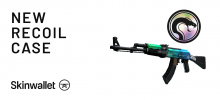Valorant Skins: The Beginner’s Guide
If you follow the gaming industry for some time, it was quite obvious that Riot Games would like to tap into the pool of free multiplayer shooters with microtransaction. Aiming for a sweet spot between Overwatch’s colorful groove and Counter-Strike’s tactical precision, they’ve released Valorant in April 2020 and although it didn’t prove to be the killer title everyone claimed it to be, it surely has found its fanbase very fast.
The mix of very methodic and precision-based combat with magic abilities and colorful puffs seems to be a new quality in first person shooters. The game is free to play, and there’s plenty of additional content and customisation. You can unlock new agents and their outfits, you can tag your weapons with agent buddies (something like keychains) and, most importantly for the gameplay, get new weapon skins – and that’s why we got so interested.
For today’s article we’re leaving the realm of CS:GO and focusing on the functioning of Valorant skins. We’ll discuss what they are, what they do, their categories and how can a Valorant player get them.
What kind of skins can you get in Valorant?
The skins – if we should call them that, because some of them are complete remodels – are available for most of the weapons. Probably there will finally be some skin for each of them, but for now there are still guns like Odin that don’t have any skin to their name.
One could divide them all into agent skins and general skins. Agent skins are unlockable skins that are bound to a certain agent – for example, if you play out Omen contracts long enough, you will finally unlock Omen’s skin for Soul Silencer Ghost pistol, usable by him. Then, the other type is general skins used for all agents. They can be bought using the game’s internal currency, which we’ll talk about in a minute. They are a bit more complicated than CS:GO skins.
First of all, they’re not always available like items in Steam Community Market. The offers are posted daily in the main hub rotation and either you manage to seize the opportunity or not. Skins are available separately or in Valorant skin bundles consisting of all skins available in a given finish. What’s more, some of the skins are not just one skin. Take the example of Luxe skins – they can be invested in further to unlock extra finishes with Radianites. Read further to learn how to get and use those.
How to get Valorant skins?
First, we’ll tackle the Agent skins, because it’s stemming from the main gameplay and doesn’t require players to buy any extra credit. With Valorant’s EXP system, there’s quite a lot of possibilities to gain content and develop your cosmetic arsenal your own way. Agents, player cards, new attires, skins and Radianites can be unlocked by completing contracts. The fun part is, you can choose to gain EXP for one agent’s contract while playing any of the agents – you choose it as your active “goal”, which all points go toward. Daily missions allow you to boost your EXP gain, and it’s highly recommended to complete them. Once you reach a certain tier on a contract level, you unlock an agent-specific weapon skin.
When it comes to general skins, they need to be purchased from the in-game shop. The main currency of buying them for Valorant Points. Those in turn are bought for real-life money. You can charge your game wallet by going to Valorant Point shop in the top right corner of the main hub and clicking on the small “V” icon. Those come in bundles and there are many payment options. Once you have some Valorant points, you need to see what offers are currently available – similar to the Fortnite shop and its V-Bucks purchases.
How can you buy Valorant skins?
When it comes to the exact process of buying, you just need to go to the “Shop” tab in the game’s main hub. It will display the offers of best Valorant ksins available at the moment. The best deal is to catch on the bundle, but then again they’re still quite expensive, but obviously cheaper than buying each skin individually.
Valorant skin prices vary, but generally, you can buy a singular skin for around 400-1000 Valorant Points and a bundle for several thousand. Valorant points have a bit of a different price tag for North America and Europe. In North America, the smallest point bundle gives you 475 VPs for $4.99, and the most expensive grants you 11000 VPs for $99.99. In Europe, the smallest bundle gets you 525 VPs for £4.99 and 12000 VPs for £99.99. This gives you a perspective on how much you have to spend to get some of those skins. Be mindful that unlike in CSGO for now it’s impossible to trade Valorant skins with other players – it’s just for your account.
As mentioned before, some skins can be also upgraded via Radianites. These come with battle passes or can be bought separately from the game store. You can use them to either unlock new color schemes for some of the skins or get new animations bound to them. Reaver skins even have a sort of an unlockable finisher animation for the last kill in the round.
The payment methods available in the Valorant store are credit/debit cards, PayPal, PaySafeCard and prepaid cards & codes. This gives users a wide array of possibilities to charge their account with Valorant points.
How to get free valorant skins
The only free Valorant skins are the ones you can get by fulfilling agent contracts. As mentioned before, to do so, you need to gain EXP points with an active contract of choice. It might take some time to garner enough EXP through regular play, so it’s best advised to observe daily missions for extra experience and fulfil them.
Summary
Based on the description of buying and using Valorant skins, it’s safe to assume that Riot Games is not only experimenting with balancing the gameplay and aesthetic factors of their competition, but also to introduce a vanity goods model that utilizes both the scarcity mechanics from games like Fortnite and the advanced visual skin diversity of games like Counter-Strike: Global Offensive.
While it’s a shame that Valorant skins aren’t tradable among users, it’s also nice that there’s a good chance to unlock extra content without having to pay for it. We’d risk a statement that some of the agent skins look much better than the buyable ones!
That would be it for this read – let us know if you found that summary helpful (or not, constructive criticism lets us improve!). Also, we could delve into some comparisons between CS:GO skins and Valorant skins if you’d find that interesting. Anyway, if you’re willing to try the self-proclaimed Counter-Strike kingslayer, all above is a handy guide to the skin system of Valorant. Happy shooting!









